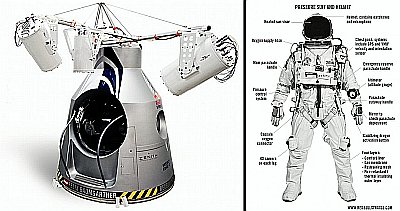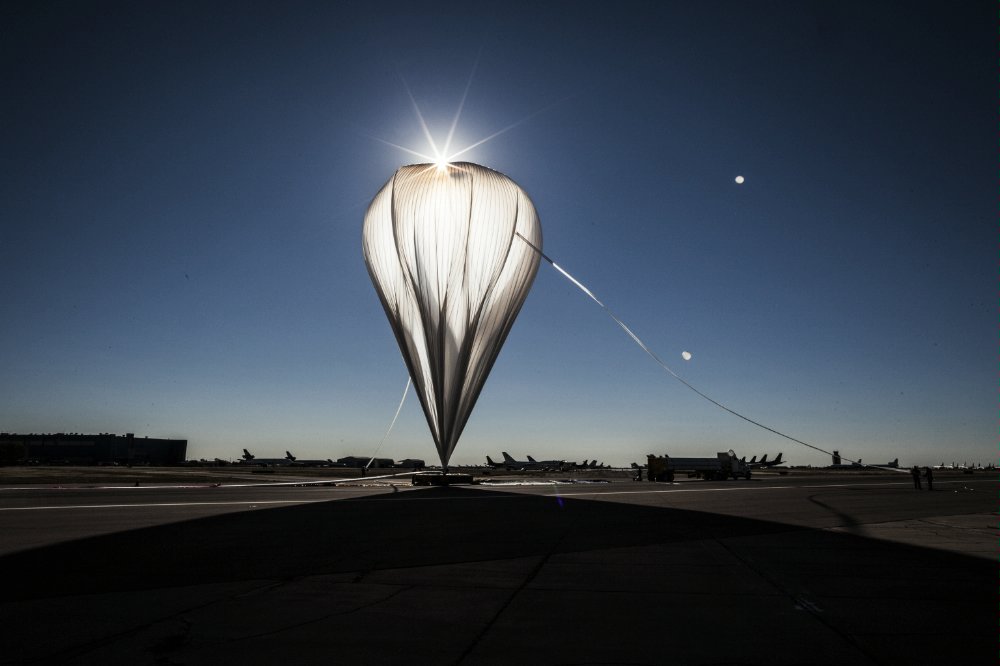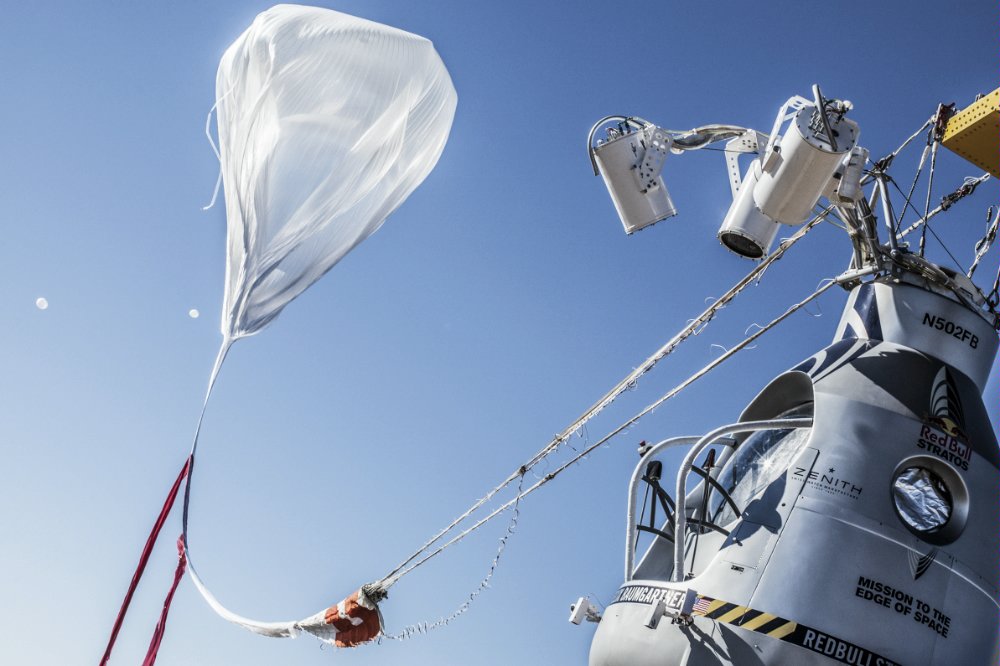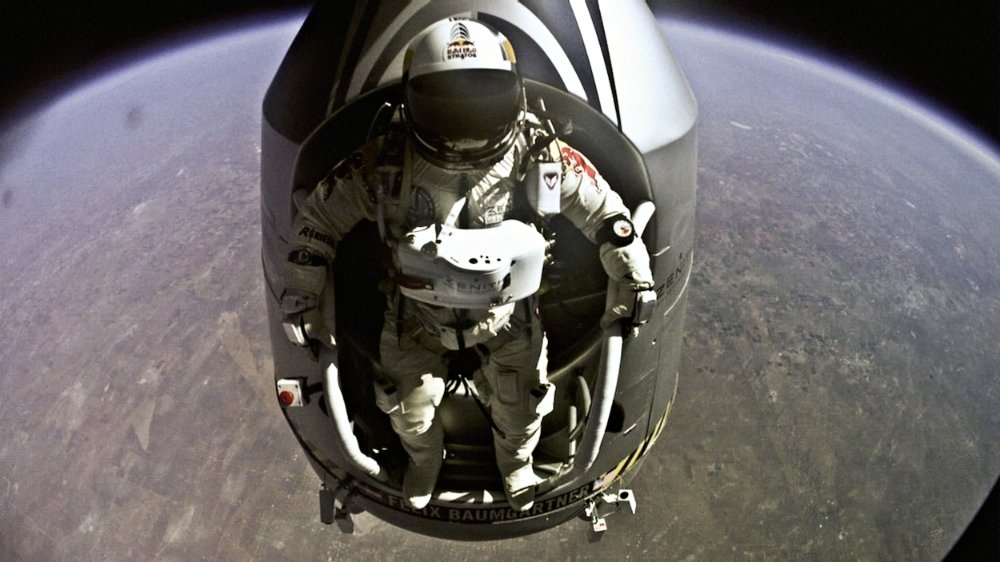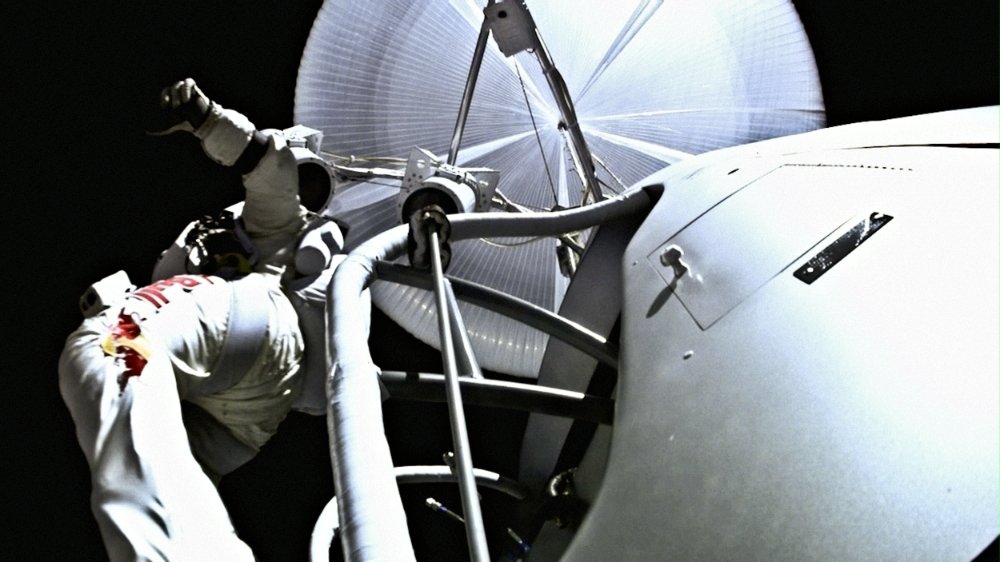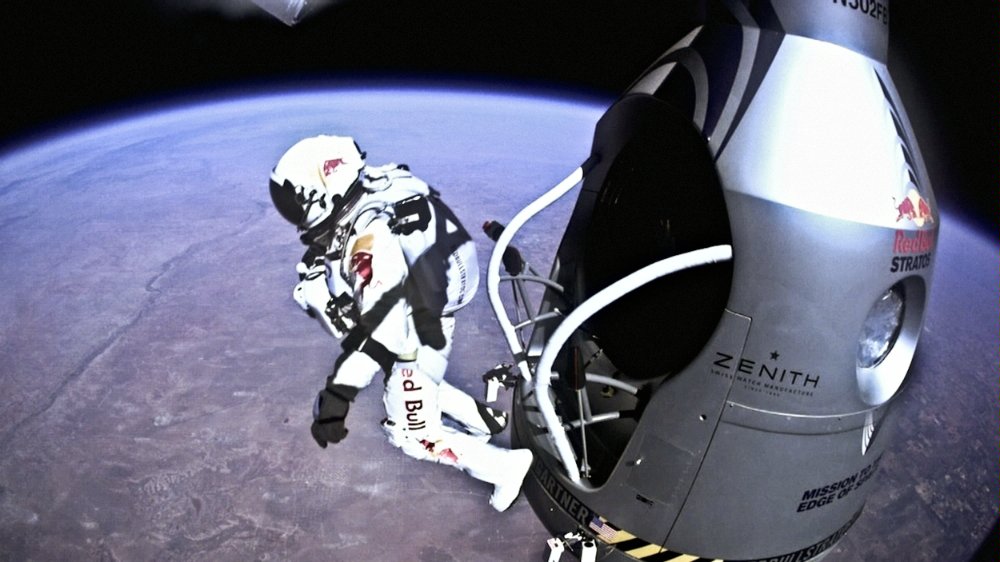Purpose of the flight and payload description
The Red Bull Stratos project, was the only non-government initiative that allowed a human being to perform with success an ascent to 120.000 feet in a stratospheric balloon and made a freefall jump, in the last 50 years. With the support of the Austrian company Red Bull GMBH as main sponsor, the extreme parachutist Felix Baumgartner as pilot -also from Austria- and a team composed by experts in aerospace medicine, engineering, pressure suit development, capsule creation and balloon operations, the project pursued to break four world records as well to obtain valuable data that may result of scientific interest for the development of extreme altitude bail-out techniques. Retired USAF Colonel Joseph Kittinger, whom previously held the record jump from 102,800 ft in 1960 acted as mentor of the project and as Mission Control's primary point of radio contact with the pilot during flight. The team was completed with Art Thompson (technical project director), Mike Todd (life support engineer), Jonathan Clark (medical director), Andy Walshe (high performance director), Marle Hewett (program manager & senior flight test engineer), Don Day Jr. (meteorologist) and more than 100 experts in several areas.
THE CAPSULE
The main element of hardware of the project was a pressurized capsule designed and built by Sage Cheshire, an aerospace firm from California, and was composed of four main elements. The inner structure is the pressure sphere which was molded from fiberglass and epoxy painted with fireproof paint, with a rolling door and windows made of acrylic. It have a diameter of 6 feet, and concontains displays, instrument panels, cameras and the sitting space of the pilot. During the flight it was pressurized to 8 psi, the equivalent to 16,000 feet above sea level, to reduce significantly the risk of decompression sickness without requiring the pilot to inflate his pressure suit.
Sourrounding the pressure sphere is the so called "cage" which cover and supports the capsule overall. It is made from welded tubes of chromium-molybdenum (a strong steel alloy used in aerospace industries) being the point where the capsule attaches to the balloon bearing the load for the parachute system.
Sourrounding both elements is the shell, the part of the capsule that is visible to the observer. It measures 11 feet high, and is made of foam-insulated skin covered in fiberglass and paint. It provides protection and insulation from the lower stratosphere temperatures.
Finally the 8-foot-diameter capsule base is the broadest part of the vessel, providing protection in the form of the base panel and crush pads. It comprises a 2-inch-thick aluminum honeycomb sandwich panel which protects the capsule from sharp objects during landing and also provides a mounting area for the balloon system control box and batteries. Outside the base are the crush pads, composed of cell-paper honeycomb covered by a fiberglass/epoxy fairing, similar to those often used on unmanned balloon-borne payloads. They were designed to handle 8 Gs on impact, thus providing shock absorption for the capsule's parachute landing.
The chair in which the pilot sits, has a sliding mechanism that allows it to move forward to get the lower half of his body out from the pressure sphere at the time of the jump. At the sides of the door there are two handrails that allows him to stand on the edge of the capsule, while maintaining stability.
Finally, a great number of High Definition (HD) cameras, remotely controlled from the Mission Control Center, are part of the capsule's hardware. Four of them are attached to the exterior base, eight are in the pressurized housings on the exterior, and three are on the interior. All HD cameras store the images to solid-state digital recorders on board, and are also routed to one of the three digital video transmitters for live viewing on Earth.
Fully loaded, the overall structure weights around 1315 kg.
PRESSURE SUIT
The personal life support system of the pilot is composed by a full-pressure suit, gloves and helmet designed by the David Clark Company.
Its purpose is to isolate the pilot from the extreme stratospheric temperatures, to avert symptoms of decompression sickness and to maintain pressure around his body. Althought it was modeled on suits worn by pilots of high-altitude reconnaissance aircraft, it has been custom made to the pilot's measurements and modified with new enhancements. The key factor was mobility as the pilot needs to have more freedom of movements for a better control of the body attitude during the fall. Thus was designed a special rotating locking neck ring that attaches the suit to the helmet as well gloves attachments. Several small mirrors were located strategically on the suit, to overcome the limitations on peripheral vision impossed to the pilot by the helmet.
The helmet shell is molded from composite materials, contrinuting to its light weight but at the same time maintaining it strong and resistant to impact. An integrated microphone and earphones allows the contact with Mission Control. The visor is distortion free and counts with an integrated heating circuit to prevent fogging and icing. A regulator in the helmet provides oxygen to the pilot from three possible sources: a liquefied oxygen source on the ground; the capsule's system, and a pair of high-pressure gaseous oxygen cylinders used during the freefall descent, with an autonomy of 10 minutes.
The core of the control and communications systems are located in the so called chest pack, which is mounted over the pressurized suit. It includes the voice transmitter and receiver that connect to the helmet, GPS beacons, telemetry equipment, an HD camera with a 120º view (along with other two cameras located on each thigh), an inertia measurement unit to report altitude and spin and finally a package provided by the Fédération Aéronautique Internationale to verify the records established.
.
PARACHUTE
The main parachute is a nine-cell, ram-air, 270-square-foot/25-square-meter canopy and is opened by pulling a handle. It is located in a back pack that also houses the drogue stabilization chute and the reserve parachute. A harness attaches the entire rig to the pilot and also holds the two bail-out oxygen bottles.
The highest danger for the pilot during the fall is to enter in a uncontrolable flat spin. To overcome this was built a special sensor which will open the drogue stabilization chute automatically, if the pilot experiences 3.5 Gs or more for a continuous period of 6 seconds. The combined parachute system components, weights 27 kg.
Official footage of the jump
Details of the balloon flight
Balloon launched on: 10/14/2012
Launch site: Roswell Industrial Air Center, New Mexico, US
Balloon launched by: ATA Aerospace
Balloon manufacturer/size/composition: Zero Pressure Balloon Raven 29.470.000 cuft
End of flight (L for landing time, W for last contact, otherwise termination time): 10/14/2012
Landing site: 37 miles E of Roswell, New Mexico, US
Payload weight: 1350 kg
The balloon was launched by dynamic method a few minutes after 15:30 utc (9:30 local). The ascent went flawlessly until the first trouble arose: Baumgartner found that a heater for his visor was not working and fogged up as he exhaled. The issue was serious enough to force the ground control to cut the real time audio on the live transmission via satellite, until it was resolved. Nevertheless, it was a very tense moment -almost unnoticed for the rest of the world- which was close to force to cancel the mission.
The ascent continued well beyond the originally established jump height of 120,000 feet levelling the balloon about 8.100 feet higher. At this point the craft exceeded the altitude for the highest ever manned balloon flight achieved by Victor Prather and Malcolm Ross, who ascended to 113,720 ft in 1961, during the Stratolab V mission. However, this mark will remain unofficial as to claim an official ballooning record, a balloonist must also bring the envelope down.
Once at float level retired Col. Joe Kittinger, holder of the records that the Austrian was meant to beat and the only person who communicated with the pilot -hence his Capcom (capsule communications) asigned role- started the extensive egress checklist. This included the progressive depressurization of the capsule and the monitoring of the inflation of the full pressure suit worn by the pilot. Once completed the process, the next step was to open the hatch and move his chair forward. Then Felix proceeded to disconnect him from the vital systems of the capsule, stood at the edge of the step, saluted the millions who were watching him around the globe and jumped.
The first seconds went flawlesslly. Through the live feed on TV the only images the world was able to see were the ones obtained by an infrared camera on the ground which showed only a blurry human-shaped white dot falling down. While in a side of the screen a counter showed the elapsed time and another marker showed the estimated speed. To add more drama to the scene you could still hear the heavy breathing of the parachutist as he was near reaching terminal velocity.
Then, the most dramatic moment of the entire mission occurred when Baumgartner seemed to be losing control of his body position and began tumbling increasingly violent causing concerns for both mission control and their relatives who were in an adjoining room watching the event. However, for relief of all following the mission after a few seconds Felix managed to recover the control and assumed the "delta" position which he maintained until 4 minutes and 22 seconds in the freefall when he activated his parachute at an altitude of 2.516 meters.
Minutes later he landed safely in a point located 47 miles east of Roswell, in the region known as Llano Estacado.
FINAL NUMBERS OF THE JUMP
In Febraury 2013, were published the results of the data obtained in the flight.
Baumgartner's record-breaking maximum vertical speed was 1,357.6 kmh / 843.6 mph / Mach 1.25 .
The jump altitude was 38,969.4 m / 127,852.4 ft.
Baumgartner's heartbeat reached a maximum of 185 beats per minute (bpm) when he exited the capsule and ranged from 155 to 175 bpm during freefall. His respiratory rate hit a maximum of 30 to 43 breaths per minute during the freefall.
Baumgartner experienced 25.2 seconds of absolute weightlessness during the initial stage of his freefall. Subsequently, he entered a period of turning and spinning that reached a maximum rate of 60 revolutions per minute and put him in a "flat spin" position for about 13 seconds. He was able to stabilize his trajectory using his skydiving skills. All physiologic data were well within anticipated parameters, never exceeding safety margins.
The Austrian described the freefall sensation as he accelerated to and through the sound barrier: "It feels like you are floating into space, and then you pick up speed very fast - but you don't feel the air because the air density is so low. For almost 35 seconds I couldn't sense the air around me because basically there was none. That kind of helpless feeling is annoying as a professional skydiver. And then when you finally enter a thicker air layer you have to keep yourself completely symmetrical because otherwise you start spinning, which is what happened to me."
Additionally, the mission achieved many science innovation milestones such as: the development and validation of pressure suit and personal parachute rig innovations; the development of new medical treatment protocols, including a protocol for the condition of ebullism anticipated to become the new standard of care; and the introduction of a "reefed" parachute system to the task of high-altitude payload recovery, offering potential benefits for both passengers and cargo.
External references
- Red Bull Stratos web site of the project
- ATA Aerospace the company that managed the launch operations
- Baumgartner's jump and the physics of freefall Physics Education, Volume 48, Number 2 (2013)
- David Clark Co. designers of Felix Baumgartner's pressure suit
- Dynamics of a skydiver's epic free fall Physics Today 67, (2014)
- Felix Baumgartner personal website
- Quantitative model of record stratospheric freefall European Journal of Physics, Volume 34, Number 4 (2013)
- Red Bull Stratos at Sage Cheshire website
- Red Bull Stratos Factsheet: final statistics at ISSUU
- Space Dive documentary made by National Geographic and the BBC
- Summary report: findings of the Red Bull Stratos scientific summit at ISSUU
- Supersonic freefall - a modern adventure as a topic for the physics class Phys. Educ. 48 150 (2013)
11513If you consider this website interesting or useful, you can help me to keep it up and running with a small donation to cover the operational costs. Just the equivalent of the price of a cup of coffee helps a lot.

